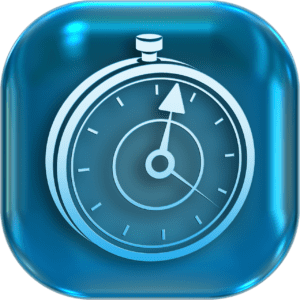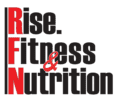It’s time to open the wardrobe and pull some skeletons out. Learn from my mistakes.
We all start at a point and (hopefully) improve from there onwards. Making mistakes is all right, not working to correct them is wrong, so here I am, shedding light on the mess ups I have faced so far to help you avoid them so that these won’t be made twice!
1. Form in your exercises matters over anything else
There is nothing worse than performing lifts with bad form. First of all because lifting heavy with bad form will lead to injuries and pain that will keep you away from training for a long time, secondly because not only a bad lift is risky but also because it’s inefficient.
Take a very classic example: the bicep dumbbell curl. If the weight is too heavy for you to handle, chances are you might end up swinging it up and down, creating momentum that takes tension from your biceps away and/or you might start bending at your back, leaning forward with your shoulders and other compensatory movements that, again, won’t help your biceps.
Quick form check for bicep curl? Click here!
Lifting with bad form in a compound exercise such as squats, deadlift, bench presses or any overhead movement is an enormous risk of very bad injuries. Don’t power through a movement: if you struggle, lower the weight, become stronger with the right form and go heavier later. Trust me, been there, done that, NOT COOL.
Lifting per se is not dangerous, being unaware of your strength limits is. If you’re not sure if your form is on point:
- Lower your ego, ask a trainer or an expert lifter to spot your execution and help you figure out the improvement points.
- Film your lifts from different angles and……study the right form. There are an infinite number of valuable free resources online to learn from. One for all? squatuniversity.com
This is what makes the difference between progressing safely and being stuck in the gutter or, worse, injured.
2. Rest time is not standard through your workout
I’m very guilty here, when I started lifting I thought that every exercise could have the same break, say 30 seconds or 1 minute before going all in again.
I found out, though, that insufficient rest will hinder your performance, will make you able to exert less power and as a consequence, at the end of the workout, have less quality reps and volume. Learn from my mistakes!
What does this mean? Inadequate rest, will slow down your progress considerably. Rule of the thumb? The closer you get to failure doing a movement the longer the rest time.
What is a long rest? It depends on the effort level that you had in the lift and if it was taken to complete failure. Warm up sets might require less rest as they should be lighter by nature, when you reach a heavy working set and you either hit or approach failure, 3 minutes, at least, should be the right resting time. Why?
Shorter rest = less power.
My word of advice? Track your breaks with a stop watch or a countdown app that tells you when the break is over so you can be on spot instead of scrolling on IG for a silly amount of time.
Don’t believe me? Trust science, read this study: Longer Interset Rest Periods Enhance Muscle Strength and Hypertrophy in Resistance-Trained Men

3. Big lifts are the main course in a training menu, accessories are the sides
Compounds, big lifts, heavy lifts are exercises that involves a few different group of muscles at the same time. Two examples for all? Barbell Squats and deadlifts.
The first targets the entire lower body plus your abdominal region and partially other stabilizers up along your back and shoulders, the second one involves the entire posterior chain of your body, basically from your neck all the way to your heels along with your abdominal region, the entire lower body (if this wasn’t clear enough) and your arms.

When should you put them in your workout program? If they’re the main course, they should have the full priority over the appetizers, if you go to a very nice restaurant and the main course is your favorite food ever, I’m sure you are not going to stuff yourself with bread and appetizers, aren’t you?
The principle is the same, if you’re training legs today and are going to work heavy on squats, you shouldn’t go crazy on the leg extension or hamstring curl machines first, add some heavy goblet squats and then, when your legs are shaking and drained, approach the barbell to then go for your lifetime heaviest set of squats. You wouldn’t possibly be able to squat at your best because…yes, you’re drained.
Been there done that, I was smashed even before approaching the barbell…learn from my mistakes, plan your workout in advance and if the squat rack is busy at the gym, work around the rest without destroying your legs first and then when it’s available go get squats done.
If the heavy exercise is the main, all the other exercises where you go and hit the muscles in isolation (leg extension for example) should come after and should not impair it. Simple, right?
4. Progress comes in different was and is not linear
The harder I worked out and the stricter I was with my diet, the more I expected to see results on my body faster, a shredded six packs, bigger arms, blowing up pectorals, huge back but… I had to learn that progress can comes in very different forms VS expectations and what we’re used to see through social media.
No need to panic if you don’t see straight away your body fat percentage go down, your shirts be too tight for your arms or you can’t lift 2x your body weight.
Take a deep breath and focus one moment on your starting point. How far did you go? How do you measure your progress? Look at these progress markers:
- Did your weights improve since you started?
- Do you feel less destroyed after completing similar exercises as before?
- Did your form improve from the first sessions you had?
- Are those jeans that were a bit tight feeling a little less tight?
- Did your sleep quality improve?
- Did you take measurements of your body? And if you did, did the values changed? You see your body all the time so it might be difficult to notice small changes.
- Did you take progress pictures? How do they look all the way to now?
- Did you measure your bodyweight consistently and did you notice a regular trend towards your goal?
How does it feel to go through the checklist? When I thought I was stuck in a slump, I used this very same checklist and realized that actually I did quite the progress without being fully aware of it.
It takes time to achieve changes in your body and progress doesn’t necessarily mean what you think it should look like, especially at the beginning but I can assure you that the more consistent you are, the better you’ll be and results will start to show. Don’t lose hope and keep working on it.

5. Results take time, stick to the plan
I kept on questioning my training from week to week as I couldn’t see changes or improvements, I kept on going all direction chasing for the new training trend and shortcuts but…it doesn’t work.
Let me waste time for you, please focus on the long term goal, get a plan, stick to it consistently and you will get results. If they’re slow to arrive, troubleshoot your path and understand where improvements can be applied but most importantly be patient.
When I was younger I wish somebody told me what I am about to tell you now:
this is not a race, there is no finish line, it’s a lifestyle so you can’t fail if you put the work in.
If you have troubles with your nutrition or training plan, no need to feel overwhelmed and powerless, there are great coaches and trainers that can help you!

